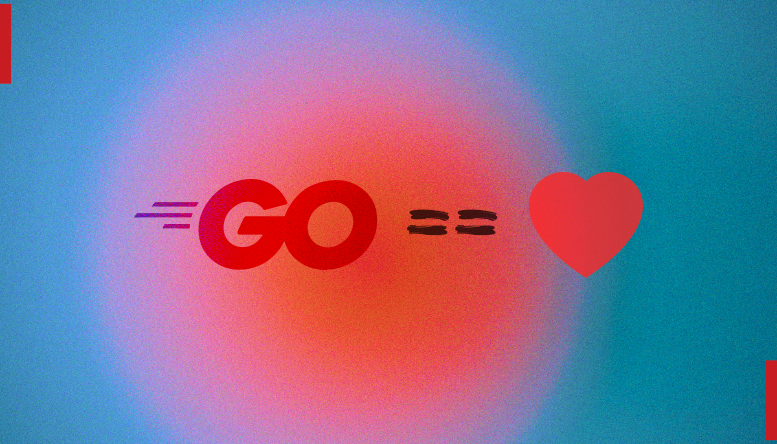Golang, or Go, as it is officially known, is a language that has been gaining a lot of attention for its simplicity, efficiency, and powerful features. Developed by Google engineers Robert Griesemer, Rob Pike, and Ken Thompson, Go was created to address the challenges they faced with other programming languages. Since its introduction in 2009, Go has become a favorite among developers, earning the affectionate nickname Golang. But what makes Go such a cute little language? Let’s explore!
1. Simplicity with Power
One of the most endearing qualities of Go is its simplicity. The language is easy to learn and use, especially for beginners. Go’s syntax is clean and concise, making it straightforward to write and read code. However, don't let this simplicity fool you—Go packs a punch with powerful features that allow developers to build efficient and high-performance applications.
Go’s minimalistic design philosophy eliminates unnecessary complexity, allowing developers to focus on solving problems rather than wrestling with the language itself. This makes Go not just cute, but incredibly practical for a wide range of applications.
2. Fast Compilation and Execution
Go was designed with performance in mind. One of its standout features is its fast compilation time. Unlike languages like Java or C++, which can take significant time to compile, Go compiles code almost instantly, making development faster and more enjoyable.
In addition to fast compilation, Go programs execute quickly. Go is a statically typed language with a strong emphasis on performance, and its compiled binaries are often more efficient than those produced by interpreted languages like Python or Ruby. This speed is crucial for developing scalable, high-performance applications, making Go both cute and formidable.
3. Concurrency Made Easy
Concurrency is a challenging aspect of modern programming, but Go makes it surprisingly easy. Go’s concurrency model is built around goroutines, which are lightweight threads managed by the Go runtime. Creating a goroutine is as simple as prefixing a function call with the
go
keyword.
Go also provides channels for safe communication between goroutines, eliminating many of the pitfalls associated with multithreading in other languages. This elegant approach to concurrency allows developers to write concurrent programs without the headaches, making Go a delightful choice for building modern, scalable software.
4. Robust Standard Library
Go comes with a rich standard library that covers a wide range of needs, from web development and cryptography to file handling and concurrency. The standard library is designed to be consistent and easy to use, allowing developers to accomplish a lot without relying on external dependencies.
This built-in robustness makes Go perfect for building all sorts of applications, from small command-line tools to large, distributed systems. The standard library's completeness and consistency contribute to Go’s charm as a language that "just works."
5. Cross-Platform Compatibility
Go is a cross-platform language, meaning that code written in Go can run on different operating systems without modification. Go’s compiler supports a wide range of platforms, including Windows, macOS, Linux, and even ARM processors.
This cross-platform compatibility makes Go an ideal choice for developing software that needs to run in diverse environments. Developers can write their code once and deploy it anywhere, which is both convenient and efficient. This ease of deployment is yet another reason why Go is such a lovable little language.
6. Strong Community and Ecosystem
The Go community is vibrant and welcoming, with many resources available for learning and development. From comprehensive documentation and tutorials to active forums and conferences, the Go community is always ready to help.
Additionally, Go’s ecosystem has grown substantially, with a wealth of third-party libraries and tools available to extend the language’s capabilities. Whether you're building web applications, microservices, or DevOps tools, you’ll find a rich set of libraries and frameworks that make development with Go a joy.
7. Perfect for Modern Development
In today’s fast-paced development environment, Go stands out as a language designed for the needs of modern software engineering. Its simplicity, performance, and scalability make it an excellent choice for microservices, cloud-native applications, and distributed systems.
Go’s focus on clarity and efficiency means that development teams can move quickly without sacrificing quality. It’s a language that promotes best practices, like clear code, good documentation, and maintainability, all of which are crucial in the modern tech landscape.
Conclusion
Golang is more than just a "cute little language"; it’s a powerful tool for building modern software. Its simplicity, performance, ease of use, and strong community support make it a delightful choice for developers of all levels. Whether you're a seasoned developer looking for a language that gets out of your way, or a beginner searching for an accessible yet powerful language to start with, Go has something to offer. So why not give Golang a try? You might just find yourself falling in love with this cute little language.
